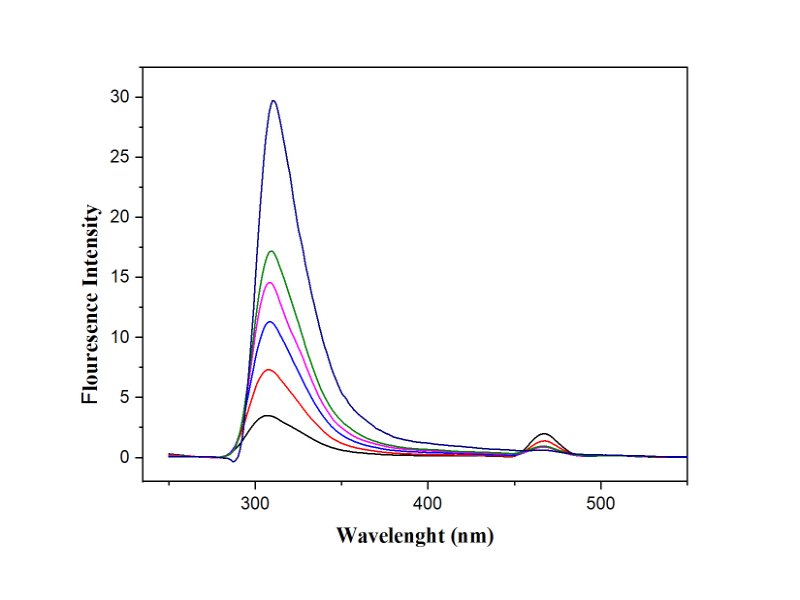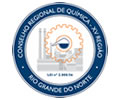ÁREA
Química Analítica
Autores
Sabir, K. (UFERSA) ; Junior, R.S. (UFERSA) ; Barbosa, G.F. (UFERSA) ; Gomes de Menezes, F.L.G.M. (UFERSA) ; Jara-cornejo, E. (UNIVERSIDAD NACIONAL DE INGENIERÍA - UN) ; López, R. (UNIVERSIDAD NACIONAL DE INGENIERÍA - UNI) ; Zeb, S. (UNESP) ; Sotomayor, M. (UNESP) ; Júnior, F.F.M. (UFERSA)
RESUMO
The present work presents an alternative synthesis of smart materials having magnetic properties for the quantification of Carbendazim in real samples.The morphological, characteristics of the synthesized materials were analyzed using field emission scanning electron microscopy (FESEM), Thermogravimetric analysis (TGA), and Fourier transform infrared (FTIR) techniques. The fluorescence analytical curve was constructed using the Fluorescence spectroscopy in the range of 2.0 × 10-5 to 2.0 × 10-4 mol L-1. The results showed that the highest adsorption capacity of the mag-MIP was 70% when compared to mag-NIP 50%.The analysis was also conducted using HPLC for comparison, and repeatability results of 8% were obtained, indicating good selectivity."
Palavras Chaves
mag-MIP; Carbendazim; biomimetic materials
Introdução
Carbendazim (CBZ) is a fungicide belonging to the benzimidazole family that is used both before and after harvest to prevent the spread of various fungal diseases in a wide range of crops [1][2]. CBZ poses a major threat to animals and aquatic life, even at low concentrations, and has been linked to a wide range of adverse health effects in humans, teratogenic and carcinogenic effects [3]. CBZ has a significant level of chemical stability because of the benzimidazole ring [4][5]. The identification of pesticide residue is crucial in order to forestall harmful problems brought about by the increased use of pesticides in agriculture [6]. Fluorescence spectroscopy offers benefits including selectivity and high sensitivity when applied to the CBZ determination process. The safety of humans and ecosystems depends on the rapid development of selective and reliable trace- level extraction techniques for its residues in the wastewater matrix. Molecularly imprinted polymers (MIPs), receptors crafted through a template- oriented manufacturing approach, possess unique cavities that are shaped by the template itself. These cavities enable mag-MIPs to effectively rebind the target analyte, even within intricate matrices[7][8]. This study details the development of theoretical study and Fluorescence methodology coupled with mag-MIP/mag-NIP that can be applied to CBZ monitoring. Synthesized polymer materials were used in the analysis of actual samples
Material e métodos
The co-precipitation technique, as detailed by Zeb et al., was used to synthesize magnetic nanoparticles. For this experiment, 80 mL of water was used to dissolve a known quantity of FeCl24H2O and FeCl36H2O under a nitrogen atmosphere and vigorous stirring. The solution was then treated to 10 mL of NH4OH drop by drop, and the reaction was kept at 80 °C for 30 minutes. After being magnetically separated the dark Fe3O4 nanoparticle, the unreacted chemicals were washed away with deionized water, and the precipitation was dried in a vacuum. After ultra-sonicating 300 mg Fe3O4 nanoparticles in 40 mL of ethanol (EtOH) and 4 mL of deionized water for 15 minutes, 5 mL of NH4OH and 2 mL of tetraethoxysilane were added (TEOS). In order to allow the mixture to respond, left it at room temperature for 12 hours. After being collected via magnetic separation, the products were washed with deionized water three times before being dried in the vacuum. After dispersing 250 mg of Fe3O4@SiO2 nanoparticles in 50 mL of anhydrous toluene containing 5 mL of 3- metacriloxipropiltrimetoxissilano (MPS), and then letting the mixture react for 12 hours in a dry nitrogen environment, the nanoparticles were modified by 3- metacriloxipropiltrimetoxissilano (MPS). The acquired product was then magnetically separated and vacuum-dried.The schematic diagram of the synthesis of magnetic MIP and its analysis procedure are provided in Figure 1.
Resultado e discussão
The construction of the analytical curve utilized all the optimized parameters.
In Figure 2, the corresponding spectra,s obtained from the different
concentration under optimized conditions, The concentration range produced a
linear plot with a coefficient of determination (R2) of 0.997, slope =
146661.46, and intercept = 1.799.In adsorption experiment When the dose of mag-
MIP is increased, the adsorption effectiveness of mag-MIP for CBZ increases,
which leads to a reduction in the fluorescence intensity. However, as the
adsorbent dose was increased from 4 mg to 10 mg, the adsorption capacity
declined and the fluorescence intensity remained unchanged.
"The suggested polymer materials were evaluated by analyzing CBZ pesticide
concentrations in river water and industrial wastewater. Different
concentrations of the spike were added to the various samples, and HPLC and
fluorescence spectroscopic techniques were used for investigation. The
recoveries were found to be in the range of 95.0–105.0%."
With regard to these results, the matrices did not produce any
appreciable interference. The suggested polymer materials show promise as an
analytical tool for determining CBZ pesticide concentrations in real samples.

Schematic diagrams of the synthesis of Mag-MIP, \r\nwashing in a Soxhlet apparatus, application, and \r\nanalysis are provided

Concentrations of CBZ are shown on a fluorescence \r\nanalytical curve (excitation = 235 nm, emission = \r\n310 nm) in a phosphate buffer solution (pH = 7), w
Conclusões
The effectiveness of the suggested electrochemical sensor's construction, which involves (MIP) supported on a glassy carbon electrode and enhanced with (MWCNTs), in measuring the limit of detection of 3.5 × 10−9 mol L−1, operational costs, and demonstrating high selectivity, notably more efficient than the HPLC method. Additionally the suggested sensor the analysis conducted using differential pulse voltammetry (DPV) resulted in good repeatability of 5.08% for(n=10).The recoveries obtained ranged from 97.42% to 103.77%.
Agradecimentos
Programa de Pós-graduação em Ciência e Engenharia de Materiais – PpgCEM/UFERSA, project PE501080434-2022-PROCIENCIA.
Referências
1. Michel, M.; Buszewski, B. Isolation and determination of carbendazim residue from wheat grain by matrix solid-phase dispersion and HPLC. J. Sep. Sci. 2003, 26, 1269–1272.
2. Ouyang, Q.; Wang, L.; Ahmad, W.; Rong, Y.; Li, H.; Hu, Y.; Chen, Q. A highly sensitive detection of carbendazim pesticide in food based on the upconversion-MnO2 luminescent resonance energy transfer biosensor. Food Chem. 2021, 349, 129157.
3. Chen, X.; Lin, M.; Sun, L.; Xu, T.; Lai, K.; Huang, M.; Lin, H. Detection and quantification of carbendazim in Oolong tea by surface-enhanced Raman spectroscopy and gold nanoparticle substrates. Food Chem. 2019, 293, 271–277.
4. İlktaç, R.; Aksuner, N.; Henden, E. Selective and sensitive fluorimetric determination of carbendazim in apple and orange after preconcentration with magnetite-molecularly imprinted polymer. Spectrochim. Acta Part A Mol. Biomol. Spectrosc. 2017, 174, 86–93.
5. Subhani, Q.; Huang, Z.; Zhu, Z.; Zhu, Y. Simultaneous determination of imidacloprid and carbendazim in water samples by ion chromatography with fluorescence detector and post-column photochemical reactor. Talanta 2013, 116, 127–132.
6. Gómez-Ramos, M. del M.; Nannou, C.; Martínez Bueno, M.J.; Goday, A.; Murcia-Morales, M.; Ferrer, C.; Fernández-Alba, A.R. Pesticide residues evaluation of organic crops. A critical appraisal. Food Chem. X 2020, 5, 100079.
7. Khan, S.; Hussain, S.; Wong, A.; Foguel, M.V.; Moreira Gonçalves, L.; Pividori Gurgo, M.I.; Taboada Sotomayor, M. del P. Synthesis and characterization of magnetic-molecularly imprinted polymers for the HPLC-UV analysis of ametryn. React. Funct. Polym. 2018, 122, 175–182.
















